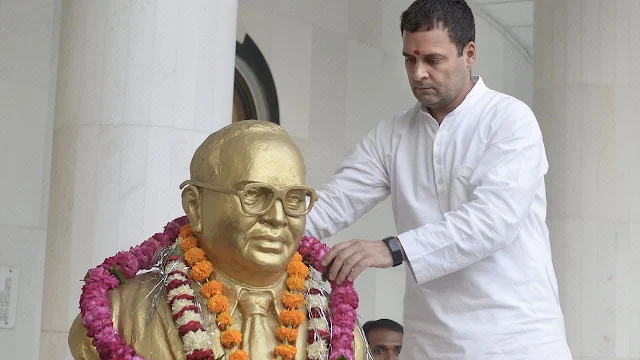The debate over a caste census emerged as a pivotal issue during the recent General Elections held in April-May 2024. The INDIA Alliance strongly advocated for the census, while the BJP remained staunchly opposed to the initiative. The opposition is unequivocal as caste continues to be a central theme in the consolidation of Hindu right-wing politics.
Historical figures like Jotirao Phule and Bhimrao Ambedkar have highlighted the exploitation experiences of marginalized groups, which led to upper-caste organizations promoting ideas of a glorious Hindu past and the concept of a Hindu nation, drawing from the values propagated in the Manusmriti.
In recent years, particularly under the influence of the Rashtriya Swayamsevak Sangh (RSS), a narrative has emerged portraying all castes as equal. RSS ideologues have produced numerous publications that assert an egalitarian history among different castes.
Nevertheless, some RSS leaders attribute the emergence of Dalits and tribal communities to “Muslim invasion” during medieval history. Bhaiyyaji Joshi, a prominent figure within the RSS, argues that the category of ‘shudras’ was never synonymous with untouchables in Hindu scriptures, claiming that so-called “Islamic atrocities” gave rise to this social stratification. He elaborates that historical foreign invaders forced Hindu communities into degrading labor, perpetuating a caste engaged in tasks like skinning animals as a punitive measure.
Amidst the rising calls for a caste census, there is an orchestrated effort to recast the caste system in a favorable light, portraying it as a protective structure of Hindu society. An article in the RSS publication Panchjanya, penned by Hitesh Shankar on August 5, 2024, asserts that foreign aggressors failed to dismantle the caste system and that it has been integral to maintaining the well-being of the nation. The piece even references former Bombay Bishop Louis George Milne, suggesting that caste is inherently tied to both social structure and religious identity.
Shankar’s article posits that just as missionaries once criticized caste, the Indian National Congress (INC) – likened to the colonial East India Company – similarly perceives it as a societal impediment. It suggests that those invaders could not breach the “caste fortress,” instead relegating upper-caste individuals to menial tasks, an assertion the author argues lacks historical grounding.
Ambedkar famously denounced the Manusmriti, while the RSS promotes its values of caste inequality
However, this perspective is rife with inaccuracies. The caste system, as delineated in the Manusmriti, predates foreign invasions and laid the groundwork for practices of untouchability and manual scavenging, steeped in notions of purity and pollution. Works like the Narada Samhita and the Vajasaneyi Samhita explicitly describe roles and duties tied to caste hierarchies, including tasks involving sanitation.
Dr. Ambedkar, a key advocate for the rights of the oppressed, viewed caste as a Brahminical constriction on society and called for its complete eradication. In stark contrast to the pro-caste sentiments expressed in the RSS’s narrative, many radical Dalit scholars and activists identify the caste system as a grave ailment of Hindu society.
While the call for proportionate representation and a caste census is viewed as a threat by Hindu nationalists led by the RSS, its roots can be traced back to the historic Poona Pact between Gandhi and Ambedkar. The caste census eventually found its place within the Indian Constitution, even as opposition efforts have historically manifested through violence, such as the riots in Ahmedabad in the 1980s.
The claim is that the INC is merely a vestige of the East India Company and its founder, A.O. Hume, is a distortion of history. Key figures in the INC, from Lokmanya Tilak to Gandhi, actively resisted British colonial rule. Grassroots organizations, such as the Madras Mahajan Sabha and the Bombay Association, sought platforms to voice their demands, eventually aligning with the INC to champion the aspirations of a burgeoning national consciousness.
The INC evolved to call for ‘Total Independence’ and the ‘Quit India’ movement. Its agenda included social justice principles championed by Ambedkar, a stark contrast to the RSS’s hierarchy-defending ideology.
In conclusion, the divergence between Ambedkar, who fought for the equitable ideals embedded in the Indian Constitution, and the RSS, which advocates for Hindu nationalism and caste hierarchy, remains profound. Ambedkar famously denounced the Manusmriti, while the RSS promotes its values of caste inequality.
Ambedkar’s role in drafting the Indian Constitution stands in opposition to the long-standing resistance from the RSS, reflecting deep ideological divides in contemporary Indian society.
Author is Political commentator
Courtesy: CounterView
